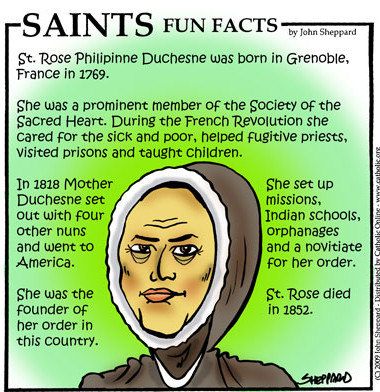 St. Rose Philippine Duchesne
St. Rose Philippine Duchesne
-Image Courtesy: Catholic Online
(CNA) Born in France Grenoble to a family of wealth with political connections, Rose’s father Pierre Francois Duchesne was an Attorney, businessman and prominent civic leader, her mother Rose Perier according to SQPN was a member of a leading family.
From the age of 8 Rose had a desire to evangelize in the United States sparked by hearing a Jesuit Missionary speak of his work there.
Rose received a basic education at home from private tutors and religious instruction from her mother. At the age of 12, Rose was sent to be educated at the Convent of the ‘Visitations Nuns’ in Grenoble, she would join them at the age of 19 despite her parents opposition.
When the French Revolution broke out the Convent was closed and Rose began caring for the poor and sick, opening a school for homeless children and risking her life to help Priests in the underground.
When the political turmoil cooled, Rose rented her former Convent (now in shambles) and attempted to revive its religious life but the spirit was gone from it and there were only 4 Nuns left. Rose and her Sisters, joined the newly formed ‘Society of the Sacred Heart’ whose young Superior Saint Madeline Sophie Barat (Feast Day: 29 May) would be her lifelong friend.
In a short time Sister Rose ‘Philippine’ was a Superior and Supervisor of the Novitiate and school but her ambition from childhood, after hearing tales of Missionary work in Louisiana, was to go to the U.S. and work among the Indians there.
At the age of 49 Sister Rose Philippine believing this was her calling from God traveled together with four other Sisters, spending 11 months at sea enroute to New Orleans, then traveling 7 more weeks on the Mississippi River to St. Louis, which she then met one of the many disappointments in her life. — The Bishop had no place for the Nuns to live and work among the Indians but instead sent them to what she would call ‘the remotest village in the United States,’ St. Charles, Missouri but with characteristic, drive and courage, Sister Rose Philippine, founded the first ‘Free’ school for girls, West of the Mississippi.
Though Sister Rose Philippine was as hardy as any of the pioneer Women in the wagons rolling west to Florissant, MO, there she founded the first Catholic Indian school later adding others in the territory.
“In her first decade (in the U.S.) Mother Duchesne suffered practically every hardship the frontier had to offer, except the threat of Indian massacre–poor lodging, shortages of food, drinking water, fuel and money, forest fires and blazing chimneys, the vagaries of the Missouri climate, cramped living quarters and the privation of all privacy, the crude manners of children reared in rough surroundings and with only the slightest training in the country.” –Louise Callan, RSCJ, Philippine Duchsene
Finally at the age of 72 when unfortunately now in failing health and retired, Sister Rose Philippine got her lifelong wish, a new Mission was founded in Sugar Creek, KS among the Potawatomi Indians and she was taken along there. Though she was unable to learn the language of these Indians, they would soon name her as the “Woman-Who-Always-Prays.” — While others would teach, Sister Rose Philippine would be in prayer.
Legend has it that the Indian tribe’s children would sneak behind her as she knelt and would sprinkle bits of paper on her habit, coming back hours later and would find them undisturbed.
Sister Rose Philippine Duchesne passed away in St. Charles, MO at the age of 83 in 1940 she was Beatified by Pope Pius XII and Canonized in 1988 by Pope Saint John Paul II
More here from the Vatican
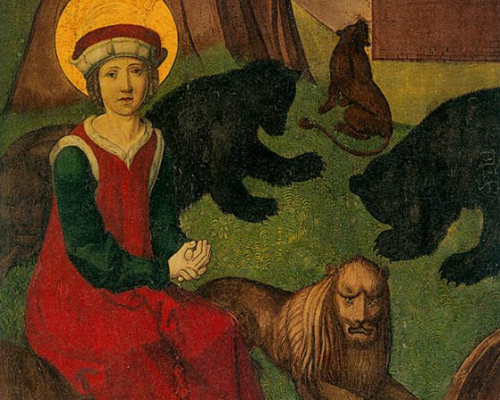
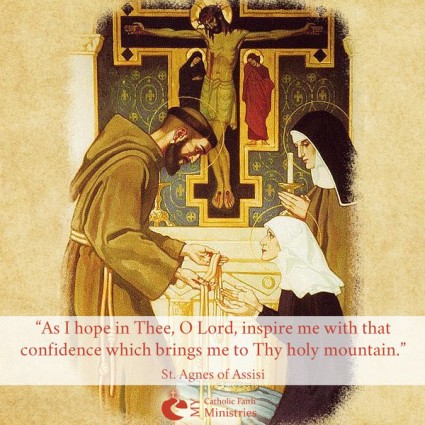 St. Agnes of Assisi Pray for Us That We May Also Have
St. Agnes of Assisi Pray for Us That We May Also Have St. Rose Philippine Duchesne
St. Rose Philippine Duchesne St. Elizabeth of Hungary (1207-1231)
St. Elizabeth of Hungary (1207-1231)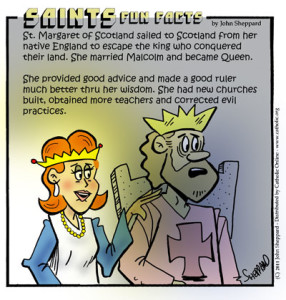
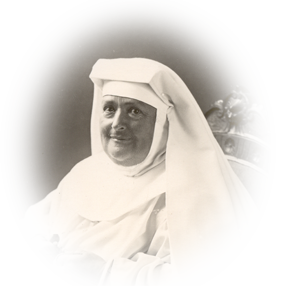 Blessed Mary of the Passion (1839-1904)
Blessed Mary of the Passion (1839-1904)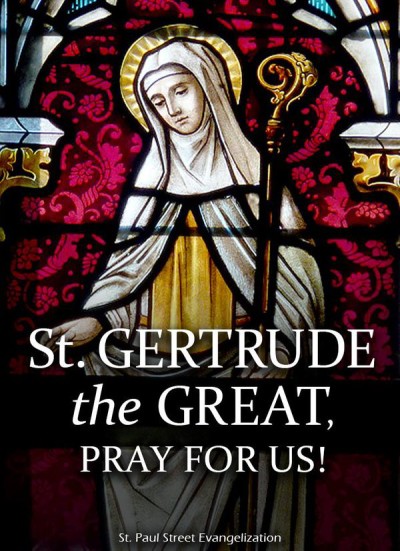 St. Gertrude the Great (1256-1302)
St. Gertrude the Great (1256-1302)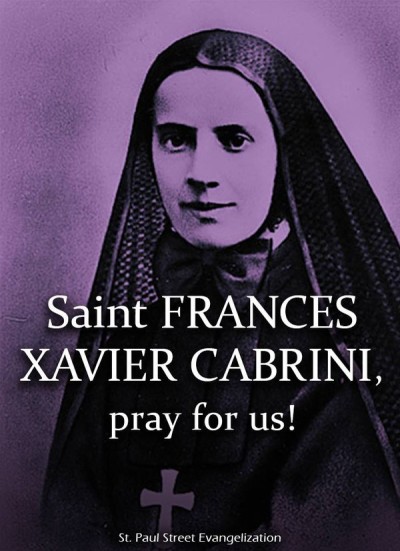 St. Frances Xavier Cabrini (1850-1917)
St. Frances Xavier Cabrini (1850-1917) St. Josaphat Kuncevyc (1580-1623)
St. Josaphat Kuncevyc (1580-1623) St. Martin of Tours (316-397)
St. Martin of Tours (316-397)